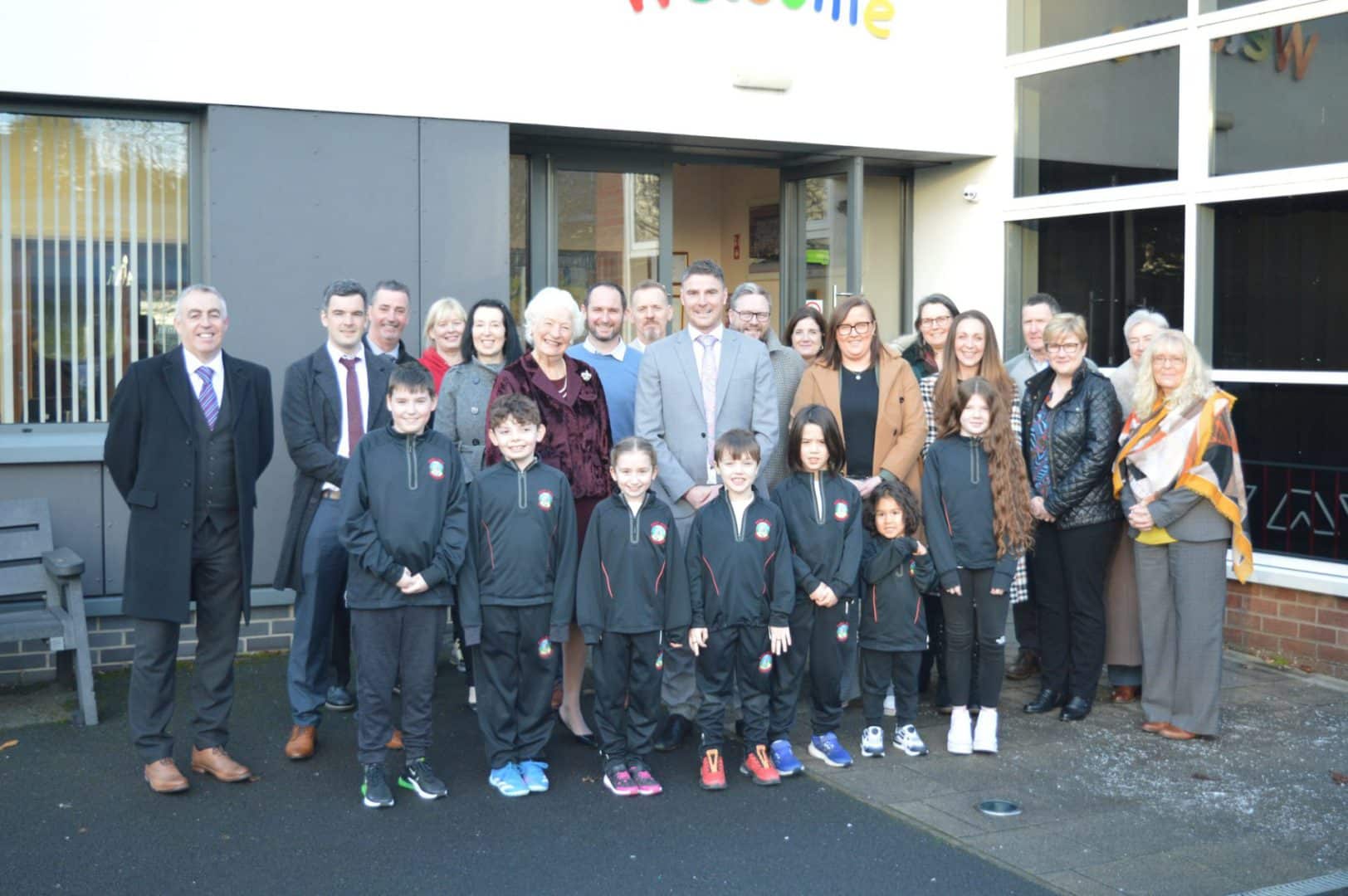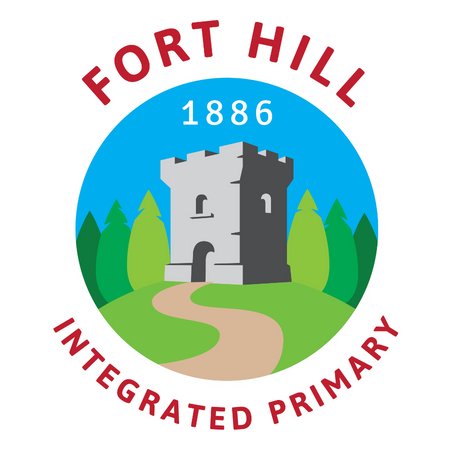Active Schools
Active School Pilot - Update
The decision to participate in the Active Schools pilot at Fort Hill Integrated Primary School was driven by three key statistical findings:
1. Only 21% of primary-aged pupils engage in 60 minutes of physical activity per day. Our aim is to achieve 100% participation in daily physical activity for all pupils.
2. Only 10% of primary-aged pupils receive two hours of PE per week.
We are committed to ensuring that 100% of our pupils receive at least two hours of quality physical education per week.
3. Only 40% of primary-aged pupils actively travel to school.
We have set a target for 80% of our pupils to actively travel to and from school.
Governor Support and Rationale
We successfully secured buy-in from our school governors, who shared our vision of increasing physical activity and enhancing the quality of PE in our school. Notably, our chair of governors, who has a background in PE and is involved with Physical Education at CCEA, played a key role in advocating for the initiative. The governors immediately recognised the educational, health, and environmental benefits of increasing physical activity, further reinforcing the importance of this pilot within our school.
Active Schools Pilot: Key Strands
Our Active Schools pilot is structured around seven core strands, each addressing a different aspect of physical activity in our school:
1. Active Travel – Encouraging pupils to walk, cycle, or scoot to school to promote daily exercise and reduce traffic congestion.
2. Active Break Times – Implementing structured movement breaks to ensure children remain physically engaged throughout the school day.
3. Active Play – Enhancing playground resources and activities to encourage greater participation in physical play.
4. Active Classrooms – Integrating movement-based learning strategies across different subjects to support engagement and retention.
5. Active PE – Delivering high-quality physical education lessons that meet and exceed the recommended two-hour weekly standard.
6. After-School Clubs – Expanding extracurricular physical activity opportunities, including sports teams, dance, and fitness-based clubs.
7. Active Home Learning – Encouraging families to participate in physical activities outside of school through homework initiatives and digital resources.
Implementation and Impact
We have implemented a variety of strategies across these seven strands to embed physical activity into the daily routine of our pupils. Some key initiatives include:
• Organising walking and cycling challenges to promote active travel.
• Introducing ‘movement breaks’ within lessons to reduce sedentary time.
• Enhancing playground facilities with structured activity zones.
• Integrating active learning techniques into core subjects.
• Providing CPD opportunities for staff to improve the delivery of high-quality PE.
• Establishing partnerships with local sports organisations to support after-school activities.
• Encouraging parents to participate in physical activity challenges with their children at home.
The implementation of the Active Schools programme at Fort Hill Integrated Primary School has been both an ambitious and rewarding endeavour. However, it has also presented several challenges that we have had to navigate in order to achieve our goals. This report outlines the key challenges faced, the solutions implemented, and the impact observed across the seven core strands of the programme.
Challenges and Solutions
Teacher Resistance and Workload
• Some teachers were initially hesitant due to concerns over additional workload and industrial action constraints.
• We addressed this by integrating physical activity into existing structures, such as break times, transition periods, and assemblies, reducing the perceived burden.
Curriculum Constraints
• The Northern Ireland curriculum places a strong emphasis on numeracy, literacy, and ICT, often making physical education a lower priority.
• We embedded movement-based learning into core subjects, ensuring that physical activity complemented rather than competed with academic priorities.
Timetabling Issues
• To maximise time efficiency, we utilised break and lunch periods for structured activities and incorporated short exercise bursts within lessons.
Limited Facilities and Weather Dependence
• Space constraints were mitigated by tailoring activities to available resources.
• Seasonal programming ensured that indoor activities dominated winter months, while athletics and outdoor games were prioritised in summer.
Funding Limitations
• Our governors played a key role in securing additional funding, supplemented by contributions from the Integrated Education Fund.
Parental Buy-In
• Initially, some parents were sceptical about the programme’s value.
• Engagement sessions led by governors successfully demonstrated the academic, health, and social benefits of increased physical activity, securing parental support.
Implementation Across the Seven Strands
1. Active Travel to and from School
• Partnered with Sustrans for the Big Walk and Wheel Week and Healthy Body Get Active programme.
• Introduced a Walking Bus initiative with Belfast Healthy City, including teacher training and resources.
• Hosted Cycle and Scoot Days with secure storage facilities.
• Implemented Parking Stride to encourage walking from designated drop-off points.
• Introduced classroom active travel charts to monitor participation.
2. Active Break Times
• Created playground activity zones for skipping, ball games, running challenges, and dance.
• Introduced leader-led games, with older pupils facilitating activities.
• Established a daily 10-minute outdoor exercise routine.
• Installed playground markings for structured movement trails.
3. Active Play
• Launched Morning Stretch and Move sessions to energise pupils before lessons.
• Held weekly Active Assemblies incorporating movement.
• Established Fitness Challenge Fridays led by P6 active school buddies.
4. Active Classrooms
• Implemented short “brain break” movement activities between subjects.
• Developed movement-based learning techniques, such as running between numbers for mental maths.
5. Active Physical Education
• Adjusted timetables to ensure every pupil receives at least two hours of PE per week.
• Enhanced quality through teacher training at Stranmillis University College Belfast.
6. After-School Clubs
• Introduced theme-based and gamified sessions, including urban sports.
• Established flexible drop-in options for trial participation.
• Offered incentives such as homework passes and healthy snacks for participation.
7. Active Home Learning
• Introduced an Active Homework initiative with weekly movement challenges (e.g., skipping, yoga, family walks).
Monitoring and Evaluation
• Pupil Voice: Regular surveys and discussions to assess enjoyment and effectiveness.
• Active Schools Committee: A dedicated group of teachers and pupils overseeing programme activities.
• Participation Tracking: Recording active break times, travel methods, and fitness activities to measure engagement.
• Recognition and Celebration: Certificates, assembly shout-outs, and school newsletter features highlight achievements.
• Academic Impact Analysis: Comparing Progress Tests in English and Maths from this year to last year to evaluate the correlation between increased physical activity and academic performance.
Conclusion
Despite the challenges faced, our Active Schools programme has successfully embedded physical activity into the daily routine of our pupils. The support of our governors, staff, and parents has been instrumental in overcoming obstacles, and the programme has led to increased pupil engagement and enthusiasm. We look forward to continuing to develop and refine this initiative to ensure its long-term success and impact on our pupils’ health and academic attainment.
By embedding physical activity into the school day and beyond, we are fostering a culture of movement that benefits not only the physical health of our pupils but also their mental well-being and academic performance. We look forward to continuing this initiative and sharing our progress with the Department of Education as we strive to meet our ambitious goals for pupil engagement in physical activity.


